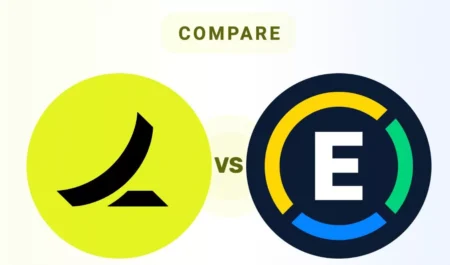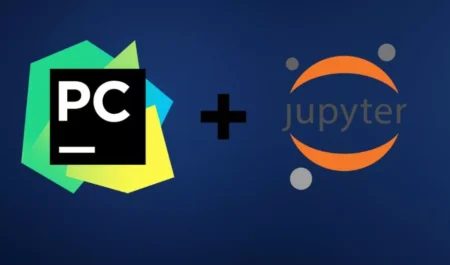1
There are two prominent online survey tools: SurveyMonkey and Typeform. Each of these programmes has its own set of capabilities. With its user-friendly interface, rapid setup, and affordable pricing, SurveyMonkey excels in making itself available to a wide range of customers, particularly small enterprises for whom it is particularly useful.
Typeform, on the other hand, stands out due to the fact that their survey designs are both visually appealing and interactive, so delivering a more engaging experience for the user. Typeform places a greater emphasis on creativity and user involvement, in contrast to SurveyMonkey, which prioritises ease of use and cost-effective procedures. As a result of catering to a variety of requirements within the realm of online survey tools, the choice between them is determined by your preferences, the objectives of the project, and the level of engagement that you want to achieve in your surveys.
SurveyMonkey vs Typeform Comparison Table
It depends on what you need from SurveyMonkey and Typeform. SurveyMonkey is great for basic polls because it is easy to use and doesn’t cost a lot of money. Typeform’s interesting interface makes it perfect for polls that are both interactive and visually appealing, putting the user experience first.
| Feature | SurveyMonkey | Typeform |
|---|---|---|
| User-Friendliness | Straightforward interface suitable for all levels | Visually appealing, engaging user interface |
| Survey Design | Templates available, suitable for basic to complex | Emphasis on visually appealing surveys |
| Analytics | Powerful tools for in-depth analysis | Limited in terms of advanced survey logic |
| Integrations | Seamless integration with popular tools | Integrates well with various applications |
| Security | Prioritizes data privacy and complies with regulations | Strong commitment to security and data privacy |
| visit website | visit website |
SurveyMonkey vs Typeform: User-Friendly Interface
The user-friendliness of SurveyMonkey and Typeform is prioritised, and both forms have intuitive interfaces. Typform is distinguished by its streamlined and contemporary style, which enables it to generate survey experiences that are both visually appealing and engaging. The fact that it places a strong emphasis on aesthetics helps to create an interactive interface. As an alternative, SurveyMonkey provides a user interface that is uncomplicated and can accommodate users of varying levels of expertise.
Although both platforms strive to provide user-friendly experiences, the emphasis that Typeform places on aesthetics may be more appealing to individuals who are looking for a visually engaging survey. On the other hand, SurveyMonkey’s simplicity is geared towards users who place a higher priority on having a straightforward and easily accessible interface for the purpose of creating and participating in surveys. The choice is determined by the desired equilibrium between the aesthetic appeal and the convenience of usage it provides.
SurveyMonkey vs Typeform: Integrations and Compatibility
SurveyMonkey and Typeform place an emphasis on usefulness by connecting with widely used tools in a smooth manner, which increases user flexibility and convenience. Users are able to connect their surveys with other applications and services in a smooth manner because to the wide number of connections that are offered by both software platforms. The general functioning of the platforms is improved as a result of these connections, which also give users the ability to make use of extra tools that are complementary to their survey procedures.
Users have the ability to quickly link SurveyMonkey and Typeform with a wide range of tools, which allows them to ensure compatibility and enhance the capabilities of their survey projects. This may be done for a variety of purposes, including information analysis, collaboration, and workflow management. The platforms’ commitment to user ease and adaptability is highlighted by the emphasis placed on integration throughout the platform.
SurveyMonkey vs Typeform: User Reviews and Testimonials

The adaptability and wealth of features offered by SurveyMonkey, which includes a comprehensive template library and powerful analytics tools, have garnered the platform excellent ratings. While users praise its capabilities, some users point out that there is a steep learning curve for more advanced features. Typeform, on the other hand, has garnered accolades for its visually stunning surveys and its user-friendly interface, both of which enable the platform to facilitate the construction of interesting forms.
On the other hand, there are people who claim that there are restrictions in terms of advanced survey logic. The user’s preferences, the objectives of the project, and the significance of advanced features or visual appeal in the process of survey creation all play a role in determining the trade-off between the extensive capability of SurveyMonkey and the visually engaging interface of Typeform.
SurveyMonkey vs Typeform: Security and Data Privacy Considerations
SurveyMonkey and Typeform both put security and privacy of user data first and use standard security steps to keep user data safe. In line with data security laws, both platforms make sure that survey responses are kept private. They show they care about protecting users’ private information by using strong security measures and following privacy standards.
Users can be sure that SurveyMonkey and Typeform keep their environments safe, whether they are working with personal or business data. This gives users faith in the platforms’ dedication to data privacy and integrity during the survey creation, distribution, and analysis processes.
Which is better?
Your priorities will determine which programme, SurveyMonkey or Typeform, is the better option for you. In addition to being user-friendly and inexpensive, SurveyMonkey is ideal for surveys ranging from simple to moderately complicated. Typform is exceptional when it comes to the creation of visually appealing and interactive surveys, which results in a more engaging experience for the user.
In the event that ease of use, cost-effectiveness, and uncomplicated surveys are most important to you, SurveyMonkey is an excellent option to consider. It is possible that Typeform is the superior choice for individuals that place a high value on originality, engagement, and a visually captivating customer survey experience. If you want to evaluate which platform is more aligned with your survey objectives, you should take into consideration the precise criteria of your project, the level of user participation you want, and any budgetary limits you have.
SurveyMonkey: The good and The bad
It has a very minimal learning curve and is really simple to do what you need to do. One can select from a wide variety of templates, question types, and design settings when using this tool.
The Good
- Versatility in survey design.
- Extensive template library.
The Bad
- Learning curve for advanced features.
Typeform: The good and The bad
Since its inception, Typeform has consistently been of high quality; it is currently the most popular form or survey collector for startups, and it is standardised across all experiences.
The Good
- Visually appealing and engaging surveys.
- User-friendly interface.
The Bad
- Limitations in advanced survey logic.
Questions and Answers
Is Typeform better than SurveyMonkey?
Typeform is a highly regarded tool that surpasses SurveyMonkey in terms of its design, data analysis, and support. If you are looking for a tool that can assist you in creating surveys that are both dynamic and beautiful, select Typeform.
Is Typeform a good survey platform?
Many Typeform users have said nice things about its features and functions, but there have been some issues about the customer service it offers. Some users have said that reaction times are slow and that problem analysis isn’t working right.
You Might Be Interested In










Leave a Reply